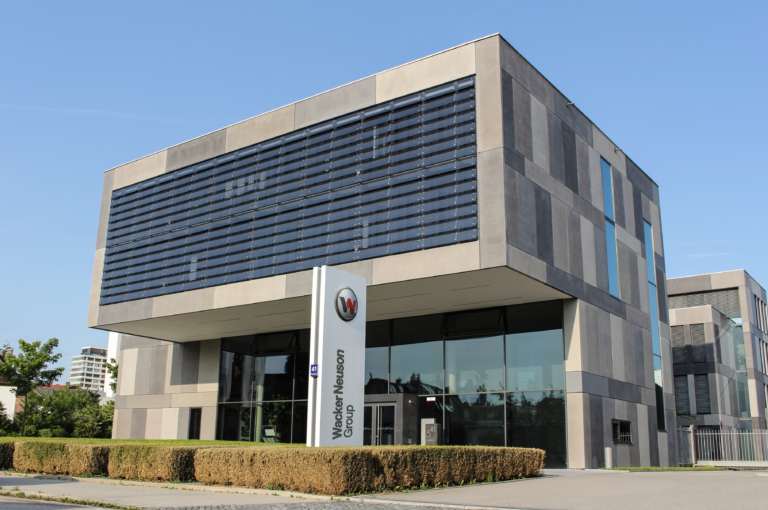Compact equipment manufacturer the Wacker Neuson Group reported revenue of EUR 796.7 million for the first half of 2020, a drop of 16.4 percent relative to the prior-year period. However it showed positive results for construction within Western Europe.
“After a positive start to fiscal 2020, the economic situation took a sharp downturn from the middle of March onwards due to the rapid spread of the coronavirus,” explainrf Martin Lehner, CEO of the Wacker Neuson Group. Revenue for the second quarter fell by 25.4 percent.
In the construction sector however, Germany, Austria and Switzerland in particular proved to be robust. The Group benefited from its extensive direct sales network, through which it offers customers a wide range of flexible rental, sales and service solutions. This helped soften the impact of widespread lockdowns in southern European countries, France and the UK. The Group’s business with customers in the agricultural sector also had a stabilising effect. Revenue in this industry grew 0.9 percent to EUR 153.4 million.
Europe’s share of total revenue increased noticeably during the first half of 2020 to reach 79.3 percent. Some European markets, in particular central European countries, were not as strongly impacted by the Covid-19 pandemic as the Americas. As a result, revenue for Europe decreased by a relatively low 8.8 percent.
The Americas region has been particularly hard hit by the Covid-19 pandemic, depressing H1 revenue 38.0 percent to EUR 143.4 million (H1/19: EUR 231.2 million). This drop was primarily attributable to key accounts, including rental companies, adopting an extremely cautious approach to investments. The US continues to experience very high infection rates. As such, uncertainty regarding the future development of the pandemic there remains particularly high.
Revenue for the first half of 2020 in Asia-Pacific contracted 24.2 percent to EUR 21.9 million (H1/19: EUR 28.9 million). In China, the effects of the coronavirus were primarily felt in the first quarter. The Chinese production plant in Pinghu and the Chinese dealer organization were temporarily brought to a complete standstill by lockdown measures. However, production restrictions were almost fully reversed by April, enabling Q2 revenue to grow at a high single-digit rate relative to the prior year. The situation was different in Australia, where the Group reported double-digit percentage revenue losses in both reporting quarters.
Profitability shaped by a sharp downturn in sales volume and an impairment loss on goodwill
Profit before interest and tax (EBIT) for the first half-year fell 41.5 percent to EUR 50.4 million (H1/19: EUR 86.2 million). The EBIT margin amounted to 6.3 percent (H1/19: 9.0 percent). The sharp downturn in sales volume and the goodwill impairment attributed to the US subgroup in the amount of
EUR 9.5 million, included in earnings for the second quarter, were the main factors that impacted on profit here. Strict cost control measures, using up hours in flextime accounts, pulling forward plant holidays and the first positive effects from the Group’s cost reduction and efficiency enhancement program – which was initiated before the outbreak of the Covid-19 pandemic – all had a positive impact. The Group also implemented a range of short-time work models in light of the rapid drop in demand. EBIT for the second quarter amounted to EUR 21.5 million and the EBIT margin settled at 5.6 percent (Q2/19: EUR 55.2 million; EBIT margin: 10.7 percent).
The financial result for the first six months of the year amounted to EUR -13.8 million (H1/19:
EUR -6.4 million) and was influenced by currency effects in the amount of EUR -7.8 million (H1/19:
EUR -0.5 million). The majority of these negative effects were related to internal Group liabilities. The sharp decline in the value of several currencies that are heavily dependent on commodity market trends had a particular impact here. The financial result for the second quarter amounted to EUR -1.6 million (Q2/19: EUR -5.3 million).
Tax expenditure came to EUR 13.9 million in the first half of the year and to EUR 7.6 million in the second quarter (H1/19: EUR 25.4 million; Q2/19: EUR 16.3 million). This corresponds to a tax rate of 38.0 and 38.2 percent respectively (H1/19: 31.8 percent; Q2/2019: 32.7 percent). The tax rate for the second quarter thus deviates from the rate communicated (around 51 percent) when the preliminary figures were published. This is due to international accounting standards, which require that the effect of one-off items are spread over the fiscal year as a whole. In line with this, the tax rate for the first quarter of 2020 has also been adjusted retrospectively (for more information, see p. 26 in the Notes to the half-year report).
The increase in the tax rate relative to the previous year is attributable on the one hand to the negative earnings reported by affiliates for which no deferred taxes could be capitalized. At the same time, existing deferred tax assets also had to be partly written down. Furthermore, the negative effects related to internal Group liabilities and the goodwill impairment are not tax-deductible.
Profit for the first six months of the year amounted to EUR 22.7 million (H1/19: EUR 54.4 million). This corresponds to earnings per share of EUR 0.32 (H1/19: EUR 0.78). Q2 profit was posted at
EUR 12.3 million (Q2/19: EUR 33.6 million) with earnings per share coming in at EUR 0.18 (Q2/19:
EUR 0.48).





